If you haven’t got a willow tree for your backyard, now is the time!
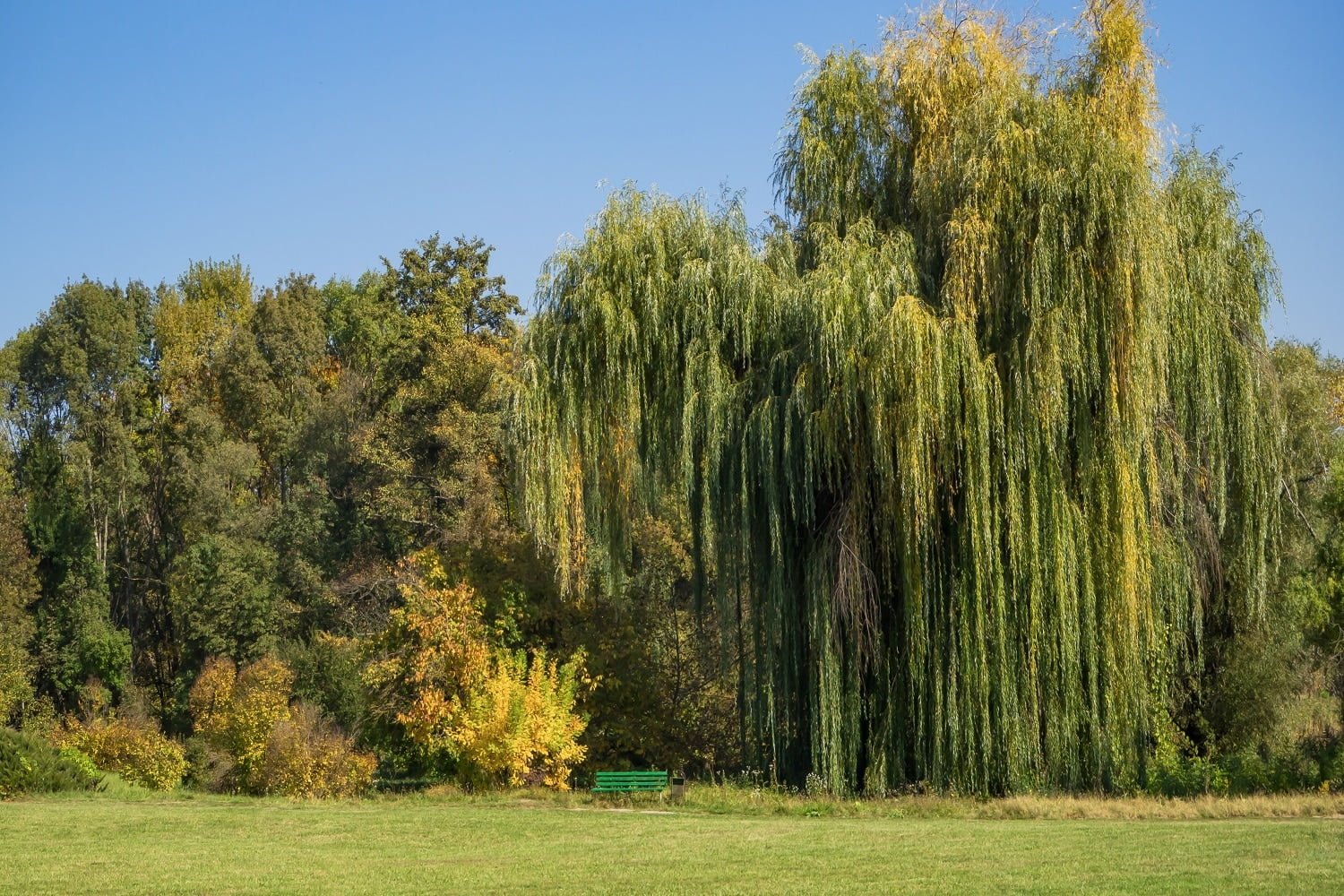
Also known as osiers or swallows, the deciduous willow belongs to the Salix genus and is a popular tree in many parts of the world. Sure, the varied looks work wonders to amp the overall appeal of any space, but that’s not the only reason why homeowners love to plant a willow.
Be it for preventing erosion or treatment of chronic pain; the willow can do it all. With their unique looks and properties, these plants deserve your attention for good. So today, we’ve compiled this list of the 13 different willow trees to consider.
Without further ado, let’s begin!
-
Weeping Willow (Salix Babylonica)

Without the intention of having a melancholy start, we begin the list with the weeping willow. Primarily a native species of Northern China, it derives its name from the trademark hanging leaves and branches. Apart from that, you may also recognize this tree by its open crown of elongated leaves. While the uppermost leaves are purely light green, the bottom layer has a greyish-greenish tint.
Its distinct appearance makes it a great choice to aid the visual appeal of the landscape. Not only that, but it also thrives in a variety of soil types, including acidic, alkaline, loamy, sandy, clay, and so on. And although they grow best when planted near water, there’s some drought-resistant ability, in case your backyard lacks moisture. Also, we’d recommend planting it in an area that receives at least four hours of direct sunlight.
History tells us that French leader Napoleon Bonaparte found solace under the shade of a weeping willow tree during his exile, and we probably found out the reasons why! For one, the tree grows between 30 to 40-feet tall and spreads up to 35-inch. Likewise, the leaves grow anywhere between 3 and 6 inches. On top of that, they adopt a bright yellowish hue during fall.
But it's during spring when the tree comes to life, thanks to the blooming yellow flowers. This is also the time when the weeping willow becomes home to numerous chirping birds. And the tough grey bark takes care of all that weight to ensure a long and healthy life, spanning over almost three decades.
-
Bebb Willow (Salix Bebbiana)

Bebb Willow is an important member of the diamond-willow category, which has been named after the diamond-shaped patterns found on their barks. These multi-stemmed shrubs usually grow in thickets (which is unusual for its size) near moist areas like side streams, bogs, and lakes. Bebb willow is a dominant inhabitant of wetlands covering the entire northern tier of North America and is seldom found south of zone 4.
As far as its growing conditions are concerned, there are quite a few similarities with weeping willow. For starters, bebb willow can grow on sandy, loamy, or clay soil. And although it’s best suited for moisture-laden areas, the drought-resistant capability comes in handy for relatively drier regions. That said, this plant doesn't compromise on sunlight and can’t survive in the shade.
As the shrub grows, it takes a columnar shape and doesn’t usually extend beyond 10 to 30-feet in height, while the leaves attain a height of about 5 inches. The trunks and barks have a maroonish shade and are mainly used for carving canes, candleholders, furniture, etc. Similarly, the twigs and branches are used for basket and arrow making by native Americans.
It’s also known by various other local names like beaked willow, gray will, diamond willow, and long-beaked willow.
There are a couple of drawbacks that we think you should be aware of. Firstly, it has a short life span as the shrub is prone to diseases and insects. Moreover, it easily hybridizes with other willow species, which impacts its appearance.
-
White Willow (Salix Alba)

Another immigrant from the willow family is the white willow, which has been named after its unique appearance. Although it has become a popular variety across the globe today, it originates from the countries of Europe, Central Asia, and Northern Africa. It’s a fast-growing tree that can reach up to a height of 70-feet, but what makes it special is the silvery white color of the leaves’ underside.
Furthermore, white willow is one of the first trees that start leafing during spring, and among the last to shed them during fall. Plus, it holds the leaves and flowers through autumn. Hence, it will continue to adorn your front yard for a considerable time. The furrowed bark culminates into droopy branches, but not to the extent of weeping willows.
The US became familiar with white willow cultivation in the 1700s, and it has adapted to the varying conditions over the years. And just like the two other varieties mentioned above, they prefer moist soil with a pH range between 5.0 and 8.8. The important thing to note here is that the plants may survive moderate flooding, but can’t tolerate drought and shade.
On the bright side, white willows are tolerant to coastal conditions and atmospheric pollution. It may also come as a surprise that the plant’s moisture-seeking roots are extremely beneficial in controlling soil erosion. However, its weak branches and stems are susceptible to damage by pests and diseases. But when maintained properly, white willows may last for up to 30 years.
-
Corkscrew Willow (Salix Matsudana)
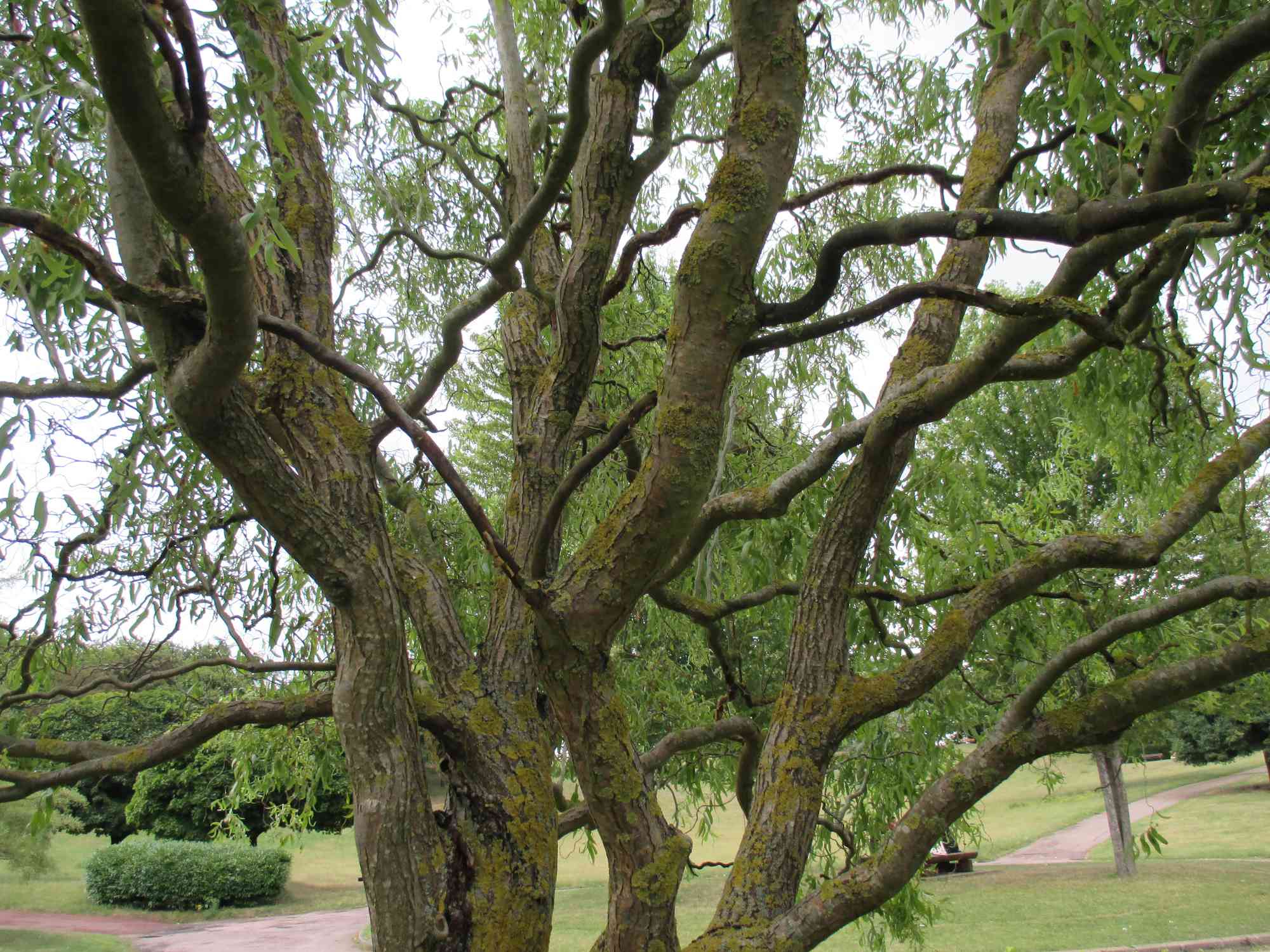
Originating from parts of Northeast China, corkscrew willow is closely related to the weeping willow variety. Unlike the shrubby stemmed bebb willow, these plants have a more tree-like appearance and are generally preferred due to its twisted or curled branches. We can only imagine the charm the tree would add in winter and fall!
Naturally, corkscrew willows find extensive use to accentuate floral arrangements and bonsai displays. The branches and twigs start growing vertically before spreading horizontally during maturity. They usually grow to a height of about 25 to 30 feet and spread not more than 15 to 20 feet. Hence, you may want to keep some clearance.
This variety is also characterized by its brittle branches, which become more prone to breakage in low temperatures. But even if you don't get a lot of wind, ensure that the falling branches don’t damage the house or car.
Beyond that, corkscrew willows don’t grow well in dry, sandy, or poorly drained clay soil. The shallow, moisture-seeking roots may damage plumber lines and sidewalks, so make sure you plant them in relatively empty spaces.
-
Goat Willow (Salix Caprea)
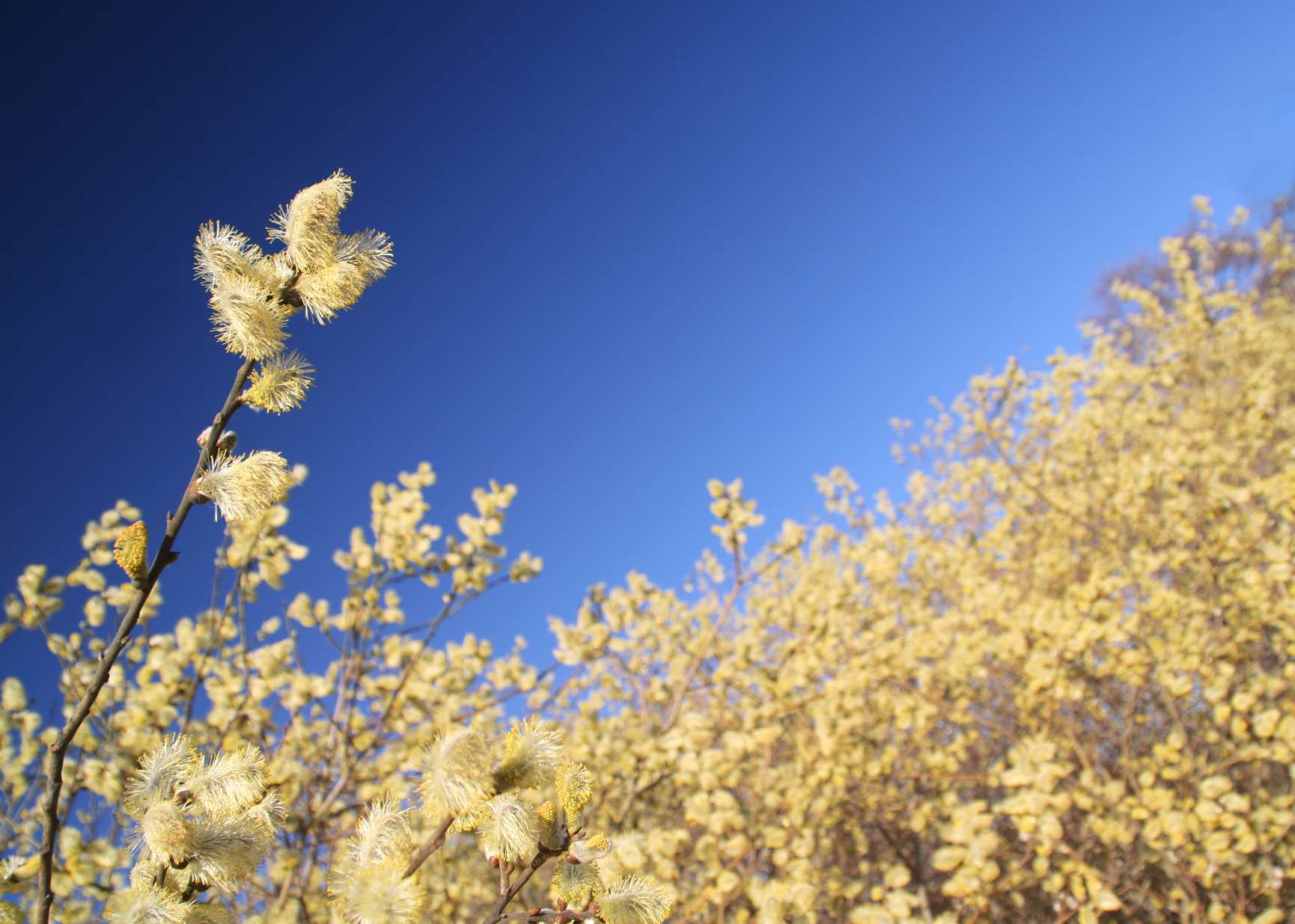
Goat willow, also known as pussy willow, is probably the most easily recognizable willow variety. This heavy-leafed plant has been named after the smooth grey male catkins, which resemble a cat’s paw. Meanwhile, the female catkins transform into woolly seeds post pollination. But that’s not the only point of attraction.
Unlike most other willows, which have long and thin leaves, goat willows have oval leaves with a furry coat of grey hairs underneath. Moreover, the pointed tip bends to one side. These plants can be categorized as either small trees or large shrubs and are commonly found in the UK, Europe and Asia.
Goat willows are often used as screens and hedges, or as a filler plant for boggy areas. They grow to a height of about 33 feet, and the heavy leaf layering is well supported by a tough greyish-brown bark. However, the twigs have an initial hairy texture, which becomes smooth with time. And they may come across as reddish yellow in the sunlight.
It may be helpful to know that goat willows are a rare variety of deciduous plants that don't have a fast growing rate when sown from cuttings. So, you will need both male and female plants for adequate pollination and subsequent seed production.
Lastly, these plants can last up to a staggering 300 years if planted in ideal conditions, i.e., moisture-laden areas with sufficient sunlight.
-
Narrowleaf Willow (Salix Exigua)
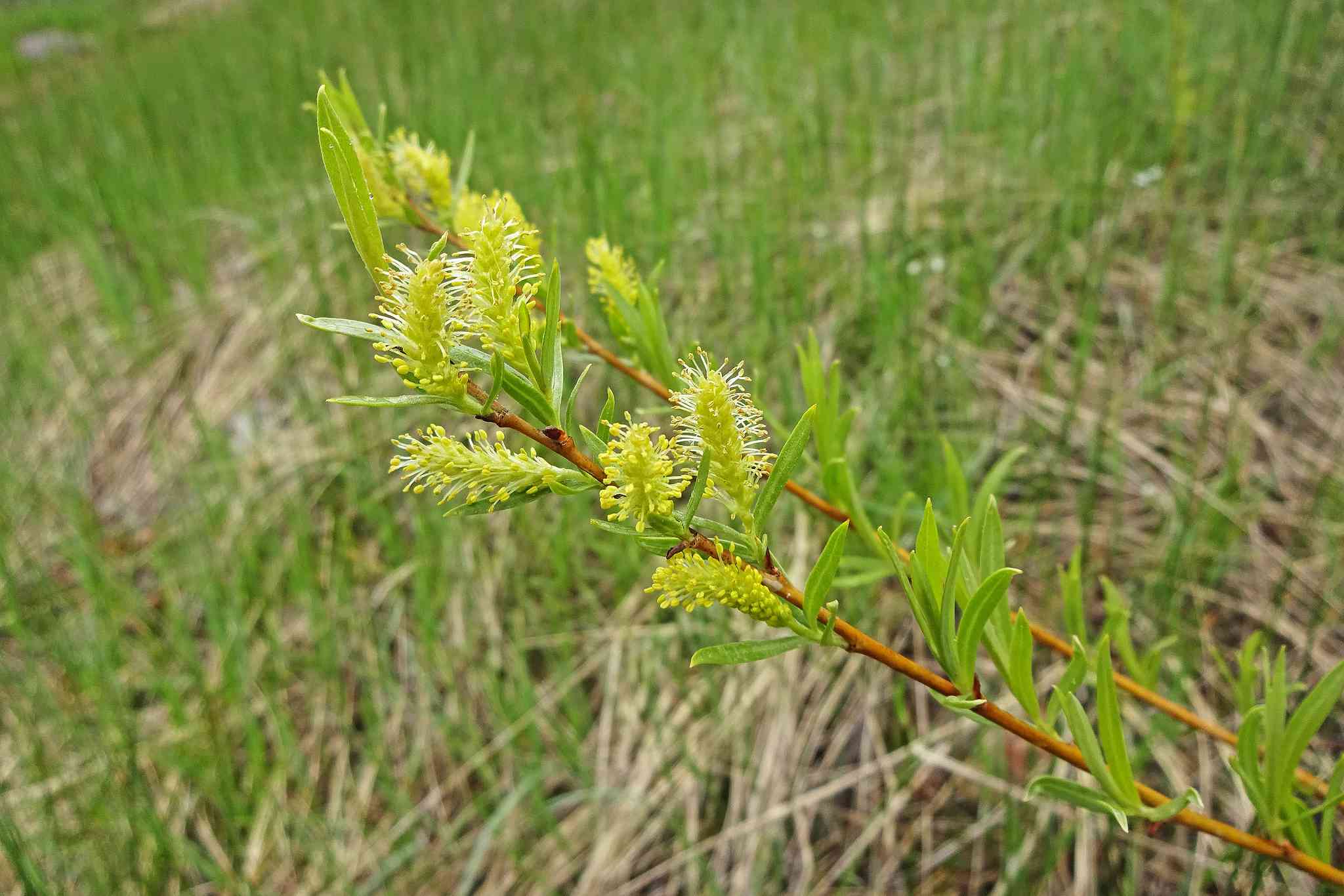
There’s hardly any willow variety that can match the versatility of the narrowleaf willow, be it in terms of use or growing conditions. Also called coyote willow, this shrubby plant is mostly found in a long stretch across North America. However, it’s considered to be threatened or even endangered in some parts of Eastern US.
This small yet hardy shrub species doesn’t grow beyond 15 feet in height, meaning you don’t need a lot of space to plan them. Similar to the white willow, this variety can prevent soil erosion along water streams and lakes.
What we like the most about this plant is that the changing conditions do not hamper its growth abilities. Since it's tolerant to both flooding and drought, you don’t really need to stress about the soil type as the willow will grow just fine.
Owing to its attractive gray furrowed bark and silky leaves, narrowleaf willows are often chosen to be grown as ornamental plants (and also called gray or dusky willow locally). In addition, the bark is used to build flexible poles, rustic furniture.
-
Dappled Willow (Salix Integra)
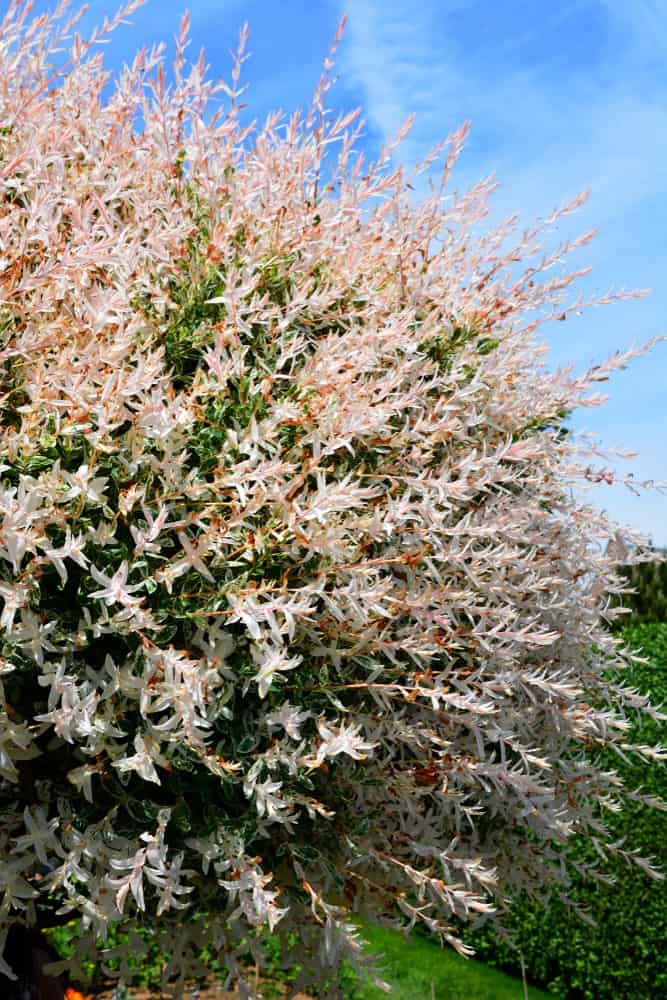
If you’re on the hunt for the ultimate ornamental plant, then the dappled willow may just fit your needs. Much of the shrub’s gorgeousness can be credited to its leaves, which exhibit varied colors during different seasons. For instance, you will observe a pink hue when the leaves first appear. As the season progresses, the pink transforms into a mix of green and white.
Like a lot of our other recommendations that don’t originate from the country, the dappled willow is a native species of Russia, Japan, Korea, and northeastern China. You may find it being sold as a part of the Albomaculata variety. Likewise, it’s also known as Nishiki willow, Japanese dappled willow, Japanese variegated willow, and tricolor willow.
Additionally, the branches complement its stunning color transformation by becoming bright red in fall and winter. Its compact size and lance-shaped leaves have made it the rightful winner of the prestigious Garden Merit of the Royal Horticultural Society. We thought of mentioning it, just in case you needed some more assurance!
-
Peach-Leaf Willow (Salix Amygdaloides)
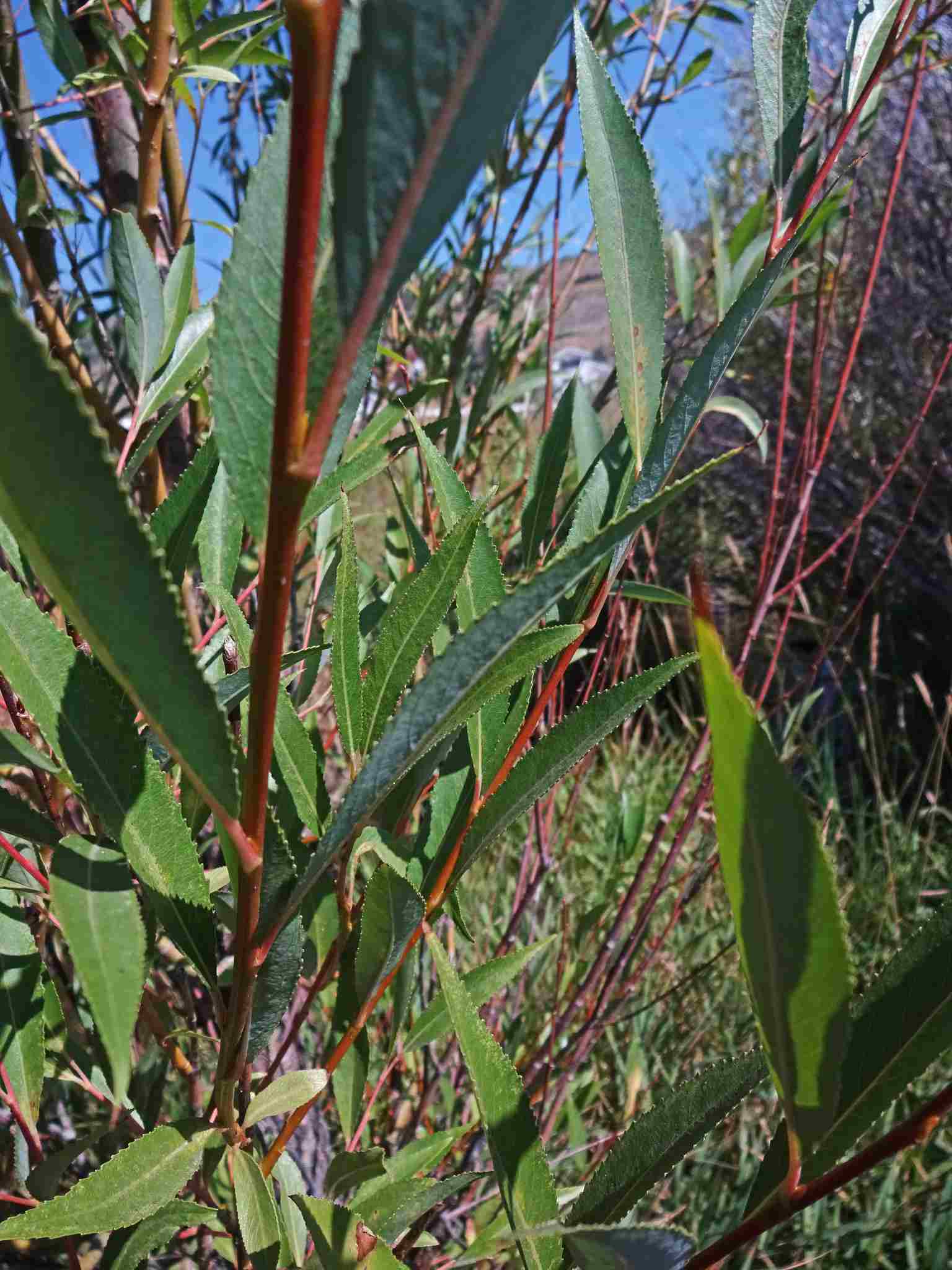
The peach-leaf willow is essentially a fast-growing species that can be either small, medium, or large (height between 30 and 50 feet). As opposed to some other varieties, this shrub is an inhabitant of North America and can be found in various regions across the US and southern Canada.
Although the name may make you think otherwise, this plant doesn’t produce peach-colored leaves. Instead, it takes the name after its peach-tree-like leaves, which grow long and wide to attain a yellowish-green hue. It also produces yellow catkins in spring that are accompanied by pretty-looking young yellow leaves.
Unfortunately, peach-leaf willow’s fast growth doesn’t correlate to a long life span. Even if you plant them in ideal conditions, including moist soil and full sun, they may not last for many years.
-
Purple Osier Willow (Salix Purpurea)
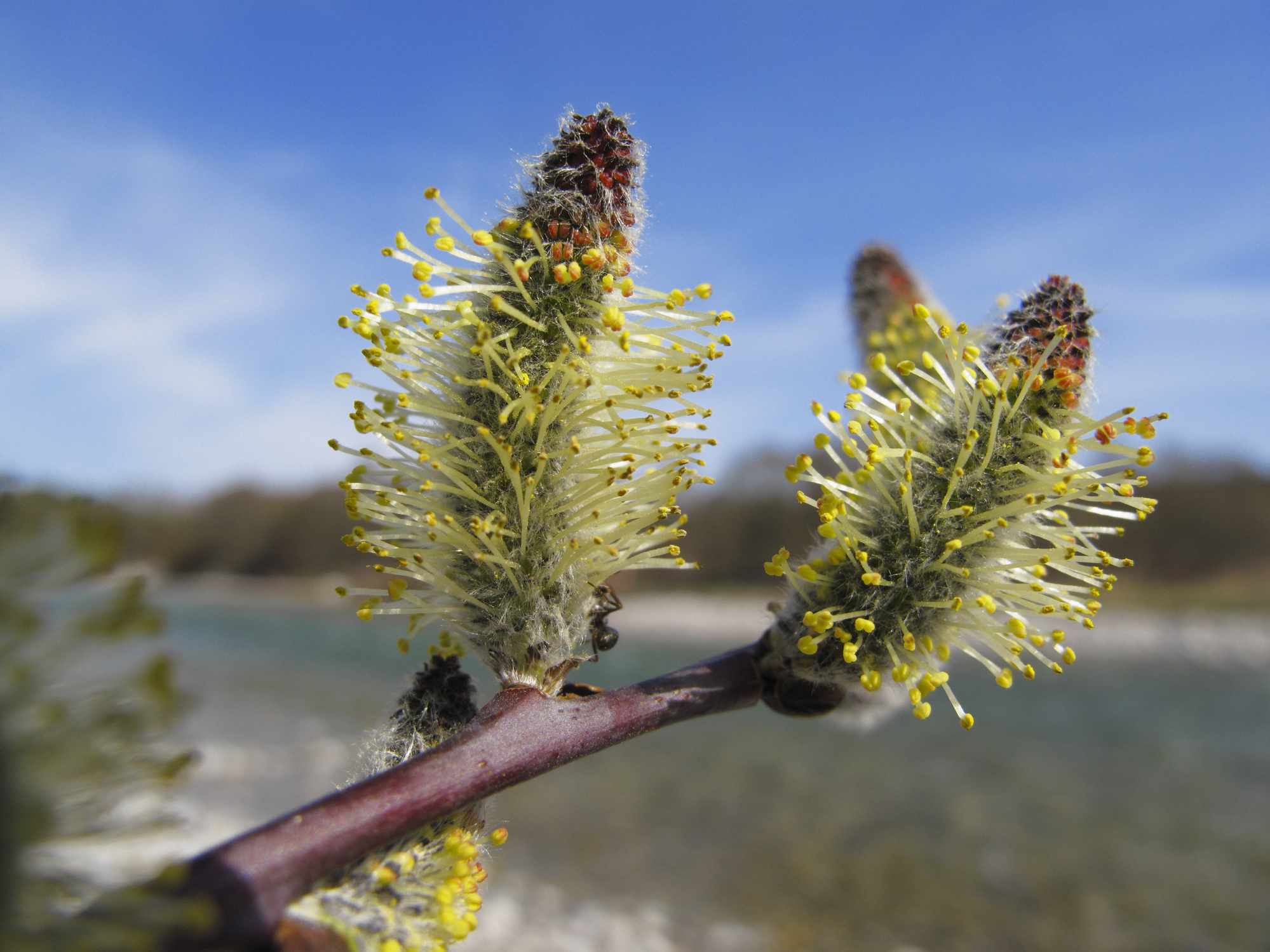
One of the tallest willows and a native of regions like Western Asia, Northern Africa, and Europe, the purple osier willow is more than just an ornamental shrub. But before getting to that part, let’s talk a bit about its beauty.
The plant has a bushy appearance that’s mainly characterized by its grayish brown trunks and branches. Apart from that, the thin yet sturdy barks are adorned with twigs and stems that can have multiple colors like yellow, brown-green, or purplish-red. In fact, the purple stems are what gives the plant its name.
Another notable feature of this willow is its catkins, which come before the leaves. The immature reddish-purple male catkins are smooth and furry, and have round florets with a stalk in the middle. Furthermore, the florets have purple anthers that turn yellow with time. The resultant flowers are extensively used in artwork.
Going back to our statement about utility, the barks are used as pain relievers due to the high levels of salicin. Finally, the purple osier willow is somewhat resistant to dry soil and shade. That said, it might need cutting back to the ground every three years for maintaining the shape.
-
Crack Willow (Salix Fragilis)

The crack willow is sometimes confused with the white willow (salix alba), thanks to its familiar-looking leaves. However, the oval leaves of this plant are much shorter than those of white willow. Moreover, the dark green color above blends into a lighter shade towards the bottom. And there are no silky white hairs on the underside.
Interestingly, this variety has been named after the loud cracking sound that its branches make while splitting, especially in winter. Not only does the dark brown bark develop deep fissures with age, but the twigs are also extremely flexible and brittle. These make a ‘crack’ sound when snapped, thereby giving the willow its name.
Mature crack willows can grow up to 82 feet high and can bore either male or female catkins. While the male ones are white, the female catkins have a greenish hue. You are likely to find this variety in abundance near the water bodies of the UK, Europe, and Western Asia.
-
Scouler’s Willow (Salix Scouleriana)
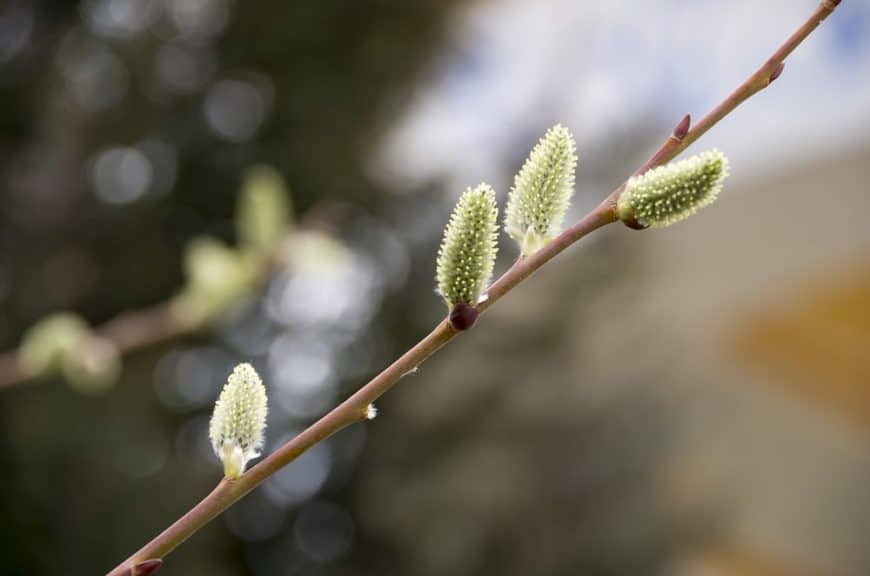
As we near the end of the list, let us introduce you to the more ornamental varieties. First off, we have the scouler’s willow, which is a native of western North America. That being said, the wood can still be used for carving purposes. Unlike most other willows on our list, this one has been after its discoverer, Scottish naturalist John Scouler.
Scouler’s willow has comparatively better drought-resistant ability, meaning it can grow in dry soil. It's typically marked by a bunch of fibrous and widely spread stems that help the plant have a long life span. The leaves on the upper side have a dark green color, while those below are slightly white with rusty-colored hair.
-
Almond Willow (Salix Triandra)
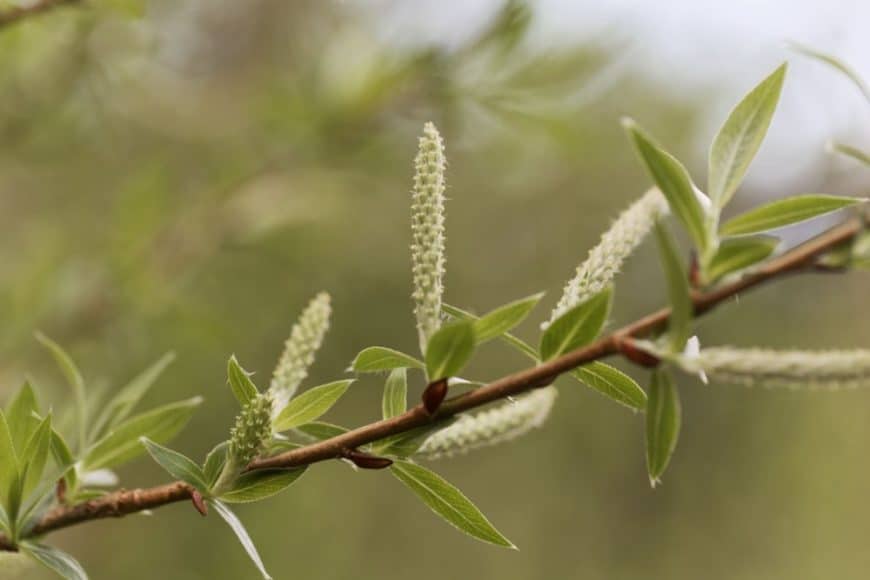
Despite being loved for its dark green almond-shaped leaves, the almond willow is quite useful for various other purposes, like biofuel production, basket making, and honey production. Beyond that, the inner bark can be powdered to add to cereal flour for baking bread.
-
Yellow Willow (Salix Lutea)

The Yellow Willow can be found in abundance across the regions of western and central North America. This shrubby plant may take the form of an upright tree and feeds animals like moose, sheep, and beavers. Apart from that, its moisture-hungry roots prevent soil erosion.
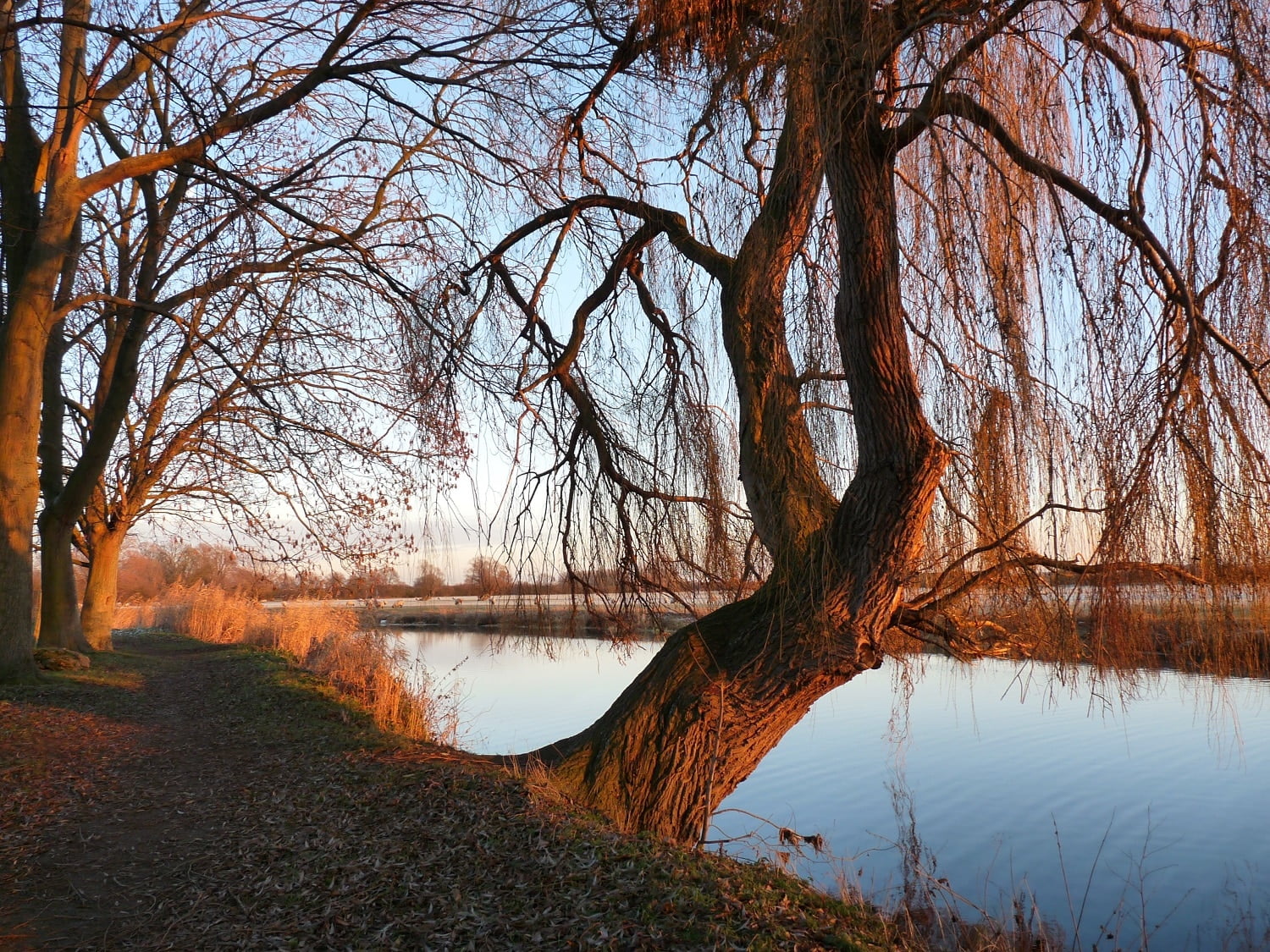
Final Thoughts
That’s all we have for today!
Hope our diverse list helps you find the best willow according to your requirement. While each of them has distinct characteristics, one thing that remains common is the moisture-seeking roots. Some may have slightly better drought-resistant abilities, but they hardly compromise a lot.
On that note, here are a few tips for growing willows before we take your leave:
- Early fall is perhaps the best time to plant your willow
- Leave a 3-inch mulch layer to keep the roots from freezing
- Fast-growing willows should be planted away from sewer lines
Adios!
